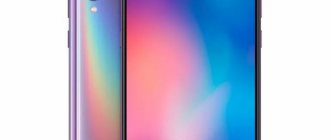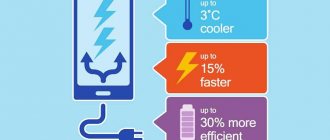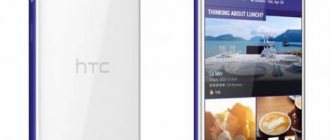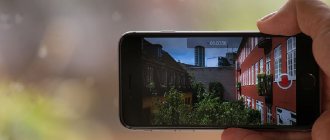Technologies make the life of a modern mobile device user more convenient in a variety of aspects. If until recently the main competitive positions were concentrated in the devices themselves, today manufacturers are paying more and more attention to accessories and peripheral components.
One of them is wireless charging. How does this device work and how can it be useful to a modern user? The answers to these questions lie in the concept of communication itself, which excludes a wired connection. Wireless contact is designed to save people from the hassle of inconvenient connectors. In many ways, this idea was realized, but such devices were not without their drawbacks.
Features of wireless chargers
In the very first years of the spread of cellular phones, manufacturers had to make reservations when positioning such gadgets as mobile. The fact is that they were and remain mobile only conditionally, since they are dependent on the charger cable. Wireless charging has made it possible to remove all the conventions of such a designation for mobile phones and smartphones.
How does this device work? All technologies on which such charging are based are based on the principles of transmitting electricity over a distance. It is important to note that the spread of wireless communication and information transfer technologies is not something new and surprising for a long time. Radio signal modules, Bluetooth and Wi-Fi sensors, network access points - all of this, to one degree or another, allows the transmission of information signals.
However, the novelty and fundamental difference between chargers with a wireless operating principle lies precisely in the possibility of transmitting energy over a distance to power batteries.
What you need to know when using wireless charging
How to install a smartphone on a charging station
Place your smartphone in the wireless charging center or in the place provided by the manufacturer.
Smartphone with Qi wireless charging / aliexpress.com
Make sure charging has started. If this does not happen, your smartphone does not support this method of energy transfer or you are using a case that is too thick.
How to avoid overheating during wireless charging
During wireless charging, the smartphone becomes hotter than usual. To avoid overheating, it can temporarily turn off power transmission when the battery charge reaches 80%.
Do not use bulky covers that interfere with natural heat transfer. And do not place foreign objects on the device that is charging. It is dangerous to cover it with a cloth, which will restrict air circulation.
How long can a smartphone be wirelessly charged?
The smartphone can be wirelessly charged all night long. When its battery charge reaches 100%, energy transfer will stop.
The main thing is to use high-quality charging, cable and power supply to avoid short circuits.
Principle of operation
The most common design of such devices involves the presence of induction coils in the filling. In fact, they act as receivers as well as translators of electrical signals. When the charger itself is connected to the mains, a voltage is generated, after which a magnetic field is formed around the transmitting coil. Actually, after entering this field of the phone, wireless charging is activated.
How does recharging work? Due to the transformation of electromagnetic waves, which are transferred to the battery as electricity. In this case, the target object for power supply can be not only a phone or smartphone. Developers are guided by broad standards of batteries and batteries, which also apply to some models of tablets, cameras, players and other equipment.
Depending on the device model and its characteristics, different charging conditions are possible. For example, to understand how Samsung wireless charging works, it is worth familiarizing yourself with the Qi energy transfer standard. Such a transmitter is capable of replenishing the battery capacity at a distance of 3-5 cm, that is, practically the mobile device must be in contact with the charger.
Wireless charging of smartphones. Answers to the most interesting questions
Rating of this article according to readers:
5
(40)
Talking about what wireless charging is is not the most original idea. If before 2020 many tech sites wrote about this, then after the release of the first Apple smartphones with wireless charging (iPhone 8 and iPhone X), such articles appeared literally everywhere.
That's why we have this dilemma. On the one hand, no one needs another reprint on the topic of wireless charging. But on the other hand, we didn’t write anything about it.
Well, they didn’t write and there’s no need to! — a person who has not read our article about how a smartphone battery works and how to charge it correctly would say. But if that article (on such a hackneyed topic) turned out to be interesting, maybe this one will turn out good too? Well, let's check it out!
First, we will talk about the general principle of how wireless charging works, and then we will move on to the most interesting and exciting issues.
How wireless charging works on smartphones
About the same as a regular charger that you use to charge your phone every day! Or did you think that inside that small box with a USB cable that needs to be plugged into a power outlet, the current only flows through the wires?
As we know, a smartphone needs 5 volts to charge, but the socket produces 220 volts. To prevent our device from burning out when connected to an outlet, it is necessary to lower the voltage. For this you need that same box called a power supply. Inside this block there is a transformer, the principle of which resembles the operation of wireless charging.
When you plug the power supply into a socket, the wire from it does not go straight into the smartphone, but is simply wound onto a coil and is not connected to anything else:
But how then does the current flow into the phone if the wire from the socket does not go anywhere? Wirelessly! And next to this coil there is another one, the wire of which is connected to the smartphone:
This clever trick allows us to lower or increase the voltage. And it works as follows.
When alternating current flows through a wire, an alternating magnetic field is created around it. The more current, the stronger this field. Why is this happening? Yes, this is just how our world works - a thrown stone falls down, and the movement of electrons in the wire is accompanied by the appearance of a magnetic field.
The word variable only means that the current constantly changes its direction. That is, at first all the electrons move in one direction of the wire, and then in the opposite direction. In one second, the current in a socket changes its direction 50 times. This is what distinguishes alternating current from direct current, in which electrons always move in only one direction.
When the current changes direction, the direction of the magnetic field also changes (north and south). We can say that our conventional magnet (magnetic field) seems to turn over 50 times per second.
So, more than a century ago, people discovered that not only does current create a magnetic field around a wire, but the magnetic field itself generates electricity in another piece of wire if this wire is nearby.
And the coil is needed only to strengthen the magnetic field, because the magnetic fields of each turn of the wire overlap each other.
It turns out that when we plug in the power supply, current flows through the first coil and creates a magnetic field, which in turn causes electrons to move in the other coil, creating electricity there.
This is how easily current is transmitted “through the air” from one piece of wire to another!
If you're wondering how 220 volts turned into 5 volts, it's even simpler here. It turns out that the difference in voltage depends on the number of turns of the wire. If we wind the wire from a 220V socket, conditionally, into a coil of 220 turns, and we wind the second wire that will connect to the smartphone into a coil of 5 turns, then 220V on one side will turn into 5V on the other wire! That is why the picture shows a different number of turns:
If current can easily “flow” between two unconnected wires, there is nothing stopping us from splitting such a transformer in half by pulling out the second coil and placing it in a smartphone.
Now, in order to “send” energy through the air, you will simply need to place the smartphone on the charger so that their coils are in close proximity to each other (the blue arrows show the magnetic field):
That's the whole secret of wireless charging!
And if everything is clear with this, then we can move on to interesting questions.
— Why does everyone call these chargers wireless if they are connected to an outlet by wire!?
Exactly for the same reason why Wi-Fi is called wireless Internet, despite the fact that the router itself is connected to charging via a wire.
Of course, it would be much more convenient if charging worked similarly to a Wi-Fi router. That is, there would be a device in the house that simply “transmitted” energy into space. Need to charge your smartphone? Lower the shutter on your phone and turn on charging, like Bluetooth or NFC.
In principle, transmitting energy over long distances is a very real task and, perhaps, such technology will soon be available to smartphone users, but for now we must be content with electromagnetic induction.
— Why don’t all smartphones support wireless charging?
In order for a smartphone to be charged wirelessly, there must be a coil inside it, the wires of which are connected to the battery. If the manufacturer has not built in this coil, such a smartphone will not be able to charge wirelessly.
Here, for example, is what it looks like on the iPhone XR:
Credits: iFixit
In addition, if the smartphone has a metal back cover, there cannot be wireless charging there, since a current will appear in the cover under the influence of a magnetic field and it will begin to heat up greatly. This won't end well.
— Is it possible to buy any wireless charger for a smartphone or do you need a specific one?
Just a few years ago, there were several incompatible wireless charging standards on the market. The most popular of these was Qi (pronounced "Chi" or "Qi"), but there were others, such as PMA.
But since there was no fundamental difference between Qi and PMA, plus Apple chose Qi as the standard for the iPhone, PMA lost the battle. Today, almost all devices use the Qi standard, so if your smartphone is more or less modern, any charger of this standard will do.
— Do I need to turn off wireless charging from the outlet when it is not charging my smartphone?
There is no need for this. Wireless charging works in standby mode when there is no load. Naturally, practically no electricity is consumed and charging does not heat up.
Periodically, such a charger sends test pulses in anticipation of a response from the smartphone, and until it responds, the device will not turn on.
— Is it necessary to place a smartphone on charge in a strictly defined place with millimeter accuracy?
Millimeter precision is not required. But, nevertheless, the coils inside the smartphone and the charger must be located more or less accurately relative to each other.
If you buy the cheapest Chinese charger, most likely there will be only one coil inside it and you will have to watch every time where and how you put your smartphone so that the placement of the coils matches. Otherwise, the smartphone will either not charge at all, or the efficiency (efficiency) of charging will be extremely low and most of the energy will go to waste.
In ordinary (good) charges, several overlapping coils are placed at once:
When you put your smartphone on such a charger, it turns on exactly the coil that is closest to the phone's coil. So, when using a normal charger, you do not need to precisely position the smartphone. They just put the phone on charge and went about their business.
There are other interesting solutions. For example, when the coil inside a wireless charger can move - you put your smartphone, and it moves right under the phone’s coil.
— Does the case affect the operation of wireless charging?
In the case, the smartphone will be located a little further from the coil, but if its thickness does not exceed 2-3 mm, this should not affect the received power. Therefore, there is no need to remove the case while charging. If it is too thick or the smartphone is located too far from the coil (say, further than 7 mm), charging is simply turned off.
The material of the case does not play any role, unless it is metal. If there are metal inserts on the case, you need to ensure that they do not overlap the coil. But even in this case, charging may not work. See the next answer for details.
— What happens if you put a metal object on the charger or there is something made of metal nearby?
Naturally, when a metal is exposed to an alternating magnetic field, electricity is induced inside and the metal object begins to heat up. This could result in the most unpleasant consequences, even a fire. But such a scenario is impossible even in theory.
The fact is that the Qi standard is not just a coil through which current flows and a magnetic field arises. In fact, wireless charging is a very smart device that will never turn on until it “agrees” with the smartphone.
In standby mode, wireless charging is unable to charge a smartphone or heat a metal object. It practically doesn't work. As soon as any metal object, including a smartphone coil, comes into the charging field, it begins to interrogate the device.
Having sent a request, the charger awaits a response. If the device confirms that it is fully compatible with the Qi standard, then the charger will check the device's position information. And if all these “metal object” checks pass successfully, only then will charging turn on.
Naturally, a simple piece of hardware “doesn’t have enough intelligence” to activate the charger.
But what happens if we place a smartphone on the charger, and there is a metal object (coin, ring, paper clip) or magnet nearby? After all, the smartphone will not tell the charger in any way, they say, there is something suspicious lying nearby and it is better to hold off on transferring energy for now.
That's right, he won't say! But this is not required. Charging does not stop communicating with the smartphone, which tells it a lot of information (received power, charge percentage, etc.). And if she notices that a certain amount of energy is bypassing the smartphone, charging immediately stops (or does not start at all). This technology is called Foreign Object Detection.
By the way, it is this “communication” between the charger and the phone that guarantees the timely shutdown of the charging process when the battery is fully charged.
— What happens if you put a phone that does not support this technology on a wireless charger?
Although this question may seem purely hypothetical, it actually has practical implications. The fact is that today car holders for smartphones with built-in wireless charging are very common. Therefore, some may be concerned about what will happen if an ordinary smartphone is placed in such a holder.
As you probably already guessed, nothing bad will happen, since the Qi standard necessarily requires agreement with the device before charging begins. What can you “talk” about with a smartphone that does not understand the “language” of wireless charging? Accordingly, charging simply will not work.
— Does wireless charging affect the operation of Bluetooth, Wi-Fi or NFC?
It would seem, what does Wi-Fi or Bluetooth have to do with it?
In fact, wireless charging operates at a specific frequency because the direction of the current changes thousands of times per second. When charging, electromagnetic waves are generated that can spread beyond the smartphone. But the operating frequency of Qi charging is from 100 to 300 kHz, while Wi-Fi and Bluetooth operate at 2.4 GHz, and NFC at 13.5 MHz.
Thus, wireless charging cannot in any way affect the operation of Bluetooth, Wi-Fi or NFC. However, it is quite capable of causing interference in the range of 100-300 kHz.
— Is wireless charging harmful to health?
If you put your hand on the wireless charger, nothing will happen, as it won't even turn on. When charging is working, its electromagnetic radiation is completely harmless to human health. As well as radiation from a smartphone or 5G towers.
— Does wireless charging kill your smartphone battery?
No stronger than wired charging. The battery is “killed” every day by the very process of charging and discharging, since after each such cycle the capacity is slightly reduced due to the chemical processes occurring inside the battery.
But what is truly harmful to the battery is very high temperatures. And here the situation is as follows. On the one hand, the wireless charging method is far from the most efficient. The charger consumes more energy than it delivers. And the smartphone receives less energy than the charging gives out. Some of this energy goes into heat.
By the way, in conventional charging, the coils do not just “dangle” in the air, but are wound on a special magnetic circuit in order to achieve the most efficient transmission of the magnetic field. There is no magnetic circuit here.
Often the heat generated is not enough to cause any harm to the battery. And fast wireless chargers are even equipped with a cooling system.
In addition, during the charging process, both devices do not stop exchanging information and if the temperature rises dangerously, the charger will begin to reduce power.
Overall, wireless charging is a completely natural method that is no more dangerous than wired charging.
PS
We have opened a Telegram channel and are now preparing very interesting materials for publication! Subscribe in Telegram to the first popular science site about smartphones and technology so you don’t miss anything!
Did you like the article? Share with others:
- 40
- 1
- 1
- 42
Shared
How would you rate this article?
Click on the star to rate it
There are comments at the bottom of the page...
Write your opinion there for all readers to see!
Thank you very much for your feedback!
Wireless charging safety
The ability of chargers to transmit energy over distances rightly raises questions regarding their safety for users who, in any case, will be in the range of the induction coils. However, manufacturers claim that such devices do not cause any harm to health.
Examples include electric shavers and brushes that operate on the same principle of electromagnetic fields as wireless phone charging. How does the charging panel work in contact with other equipment and does it harm it? This question is also raised, but the manufacturers deny such a danger.
The fact is that the maximum power at which such devices operate is no more than 5 watts. This is not enough to have a negative impact even on devices sensitive to electromagnetic fields.
What are the wireless charging standards?
To charge a smartphone wirelessly, a pair of coils are used: one in the charging station, which is connected to power, and the other in the device.
When current appears on the first coil, a magnetic field is formed around it, which transfers it to the second.
Wireless charging from inside / belkin.com
The magnetic field appears due to the use of high frequency alternating current. It is converted to a constant when sent to the device.
Depending on the frequency of the current, magnetic induction or magnetic resonance are activated.
Magnetic induction stations
They transmit energy over a distance of about 10 mm and use an alternating current frequency of 100–357 kHz to do this. To charge a smartphone using such a station, it must support a specific frequency range.
The magnetic field does not pass through metal, so wireless charging is only possible on smartphones whose back panels are made of glass or plastic. However, even a thick protective case can interfere with the charging process.
Qi and PMA wireless chargers operate on the principle of magnetic induction.
Qi
Since 2008, the Qi standard has been developed by the Wireless Power Consortium (WPC), which includes charger manufacturers from America, Europe and Asia. Its specifications are in the public domain Qi wireless power specification.
This wireless charging standard is used in the iPhone 8 and newer Apple smartphones, as well as in all Samsung Galaxy S devices of the last five years.
Xiaomi, Huawei, LG, Sony, Asus, Motorola, Nokia, HTC also work with it.
P.M.A.
The development of the PMA standard from 2012 to 2015 was carried out by the organization Power Matters Alliance (PMA).
It is more common in the USA. There it was promoted by AT&T removed Qi wireless charging in the Lumia 1520 to make room for PMA by AT&T mobile operator and Starbucks coffee chain.
Today, Power Matters Alliance, as part of the AirFuel Alliance, is developing an alternative type of wireless charging, AirFuel. But along with Qi, this standard is still supported by Samsung smartphones, including the latest flagships Galaxy S10, S10+ and S10e.
Magnetic resonance stations
Unlike stations operating on magnetic induction, they use a current frequency increased to 6.78 MHz. This allows you to expand the charging radius to 40–50 mm.
These wireless chargers also use a set of two coils. But they may not be opposite each other, so chargers do not necessarily have to be made in the form of stands or mats.
Wireless chargers of the Rezence and AirFuel standards operate on the principle of magnetic resonance.
Rezence
The development of Rezence from 2012 to 2015 was carried out by the Alliance for Wireless Power (A4WP).
By increasing the charging distance, the standard was positioned as a more convenient alternative to Qi and PMA. A4WP is currently part of the AirFuel Alliance and is working on the AirFuel standard.
Rezence was promoted by component manufacturers Broadcom, Gill Electronics, Integrated Device Technology (IDT), Intel, Qualcomm, Samsung Electronics, Samsung Electro-Mechanics, and WiTricity.
AirFuel
This type of wireless charging has not yet entered mass production. Its distribution potential is still unclear, but Huawei plans to equip all its smartphones with it on a resonant wireless charging AirFuel.
The AirFuel Alliance, which will be a continuation of Rezence, has been developing the AirFuel standard since 2020.
In theory, AirFuel can even be hidden under a table or other surface. Through it, stations will be able to simultaneously work with several devices: smartphones, headphones, laptops.
Devices from Samsung
One of the most successful developments in the Korean wireless charging segment is the Wireless Charging Pad. This is an optimized version of the basic family, which has eliminated the common problems of most similar first-generation devices. One of the main advantages of this model is the ability to interact with the phone’s battery regardless of its position relative to the functional platform.
This version is commercially available as a wireless charger for the Samsung Galaxy S6, which supports the WPC standard. This technology is different in that it is suitable not only for Galaxy smartphones, but also for most other Samsung phones. In addition, as the manufacturer notes, charging can replenish energy to half the capacity in just a few minutes.
Which devices support Qi wireless charging?
Almost every smartphone supports wireless charging technology. However, if we talk about a smartphone from Apple iPhone, then they need an additional accessory so that the phone can be charged using wireless charging.
Other smartphones that come from the manufacturer, such as Asus, Meizu, Xiaomi, HTC, LG, Samsung, Nokia and others, can be charged using wireless charging without any additional accessories.
However, let's list all the device models that support wireless charging:
- Apple: iPhone 8, iPhone 8 Plus, iPhone X.
- Nokia : Lumia 720, Lumia 735, Lumia 810, Lumia 820, Lumia 822, Lumia 830, Lumia 920, Lumia 925, Lumia 928, Lumia 930, Lumia 950XL, Lumia 950 Dual-SIM, Lumia 1020, Lumia 1520, Lumia Icon.
- Samsung : Galaxy S6, Galaxy S6 Duos, Galaxy S6 Edge, Galaxy S6 Edge+, Galaxy S7, Galaxy S7 Edge, Galaxy S8, Galaxy S8+, Galaxy Note 5, Galaxy Note 7, Galaxy Note 8.
- Motorola : Droid Bionic, Droid 3, Droid 4, Droid Maxx, Droid Mini, Droid X, Droid Turbo, Moto Maxx.
- LG : Revolution, Spectrum, Spectrum 2, Optimus 2, Lucid 1, Lucid 2, G2, G3, G3 Prime, G3 Cat 6, G4, G5, G6, G6+, Optimus, Optimus Pro, Optimus G Pro, Optimus G Pro 2 , Optimus IT, L-05E, V30.
- Google : Nexus 4, Nexus 5, Nexus 6, Nexus 7.
- HTC : Thunderbolt, Droid Incredible 2, Droid Incredible 4G LTE, Rezound, Rezound 8X, Droid DNA, 8X.
- Sony : XperiaN3, Xperia Z3, Xperia Z3V, Xperia Z4V.
- YotaPhone : Yota Phone 2.
- Vertu: Signature Touch.
- Kyocera: Hydro Elite, Urbano L01, Urbano L03, Kyocera Torque, Kyocera Torque GO2.
- Blackberry: Z30, Classic.
- Asus: Padfone S.
- Cat: Catphone S50.
Apple devices
It must be said right away that Apple products do not support wireless charging technologies. However, the manufacturer is looking for alternative ways to provide this feature to its users.
In particular, he recommends using accessories in the form of cases from Duracell. Therefore, the question of whether wireless charging works through a case will have a positive answer in the case of iPhones. If this method does not suit you, then you can use an iQi format receiver card. It connects via a special Lightning connector and is also hidden under a standard smartphone case.
Is it worth buying a wireless charger today?
Wireless charging will be a good gift for a colleague or business partner; it will take its rightful place on your desktop at home or in the office.
But before purchasing wireless charging, you need to weigh its advantages and disadvantages.
Advantages
- You can simply put your smartphone on the charger, and it will immediately begin to replenish energy.
- No need to look for a cable with a suitable connector (Lightning, microUSB, USB-C).
- Reduces wear and tear on power cables, ports and connectors.
Flaws
- Wireless charging is slower than wired charging due to lower efficiency.
- A charging station is rarely included in the kit; usually you have to purchase it separately.
- You cannot fully use your smartphone while charging.
- If you accidentally move a smartphone lying on the station, charging may stop.
- Thick protective cases or cases with metal parts may interfere with wireless charging.
- Wireless charging is not always convenient to take with you.
Wireless charging today has more disadvantages than advantages. It is still at the initial stage of development, so you need to clearly understand where and when it is appropriate to use it.
A wireless charger is convenient on your desk. You can put it on your bedside table and place your smartphone on it before going to bed. But it’s completely inconvenient to take such a charger on a trip and use it on the go.
With the development of Qi and AirFuel standards, wireless charging will be used everywhere. But to do this, manufacturers will have to expand the range, increase the charging speed and deal with other shortcomings.
Devices from Cota
Cota employees are also developing interesting proposals. They are not just mastering the concepts of specialized charging panels for mobile devices, but are striving to expand their range of action as much as possible. For example, in addition to phones and tablets, such a device can fill wearable electronics with energy. Moreover, for this it is not necessary to bring the device close to the active panel.
A small device the size of a bread box works at a distance of 10 m. The question arises: “How does wireless charging work with such a radius? Is it effective enough? And here it’s worth returning specifically to wearable technology, including smart watches, bracelets and wristbands, since it is in working with these gadgets that the device demonstrates the most impressive performance. Obviously, batteries from phones and smartphones require more time to maintain.
How did wireless charging come about?
People now have the most important wireless gadget called a smartphone, which has become a means of communication, a camera, and even a portable bank. It still has to be charged periodically using wires. However, not so long ago, wireless chargers became popular, which restore the energy of a smartphone without connecting to the mains via a cord.
The very understanding of the possibility of creating wireless charging appeared back in 1820. Then the famous physicist Andre-Marie Ampère proved that electric current creates a magnetic field around itself. A year later, another scientist Michael Faraday discovered the law of induction, according to which most wireless chargers now work.
However, only Nikola Tesla was able to transmit energy over a distance for the first time in 1893. But even then, no one would have thought that the wireless charging principle could be used right now. Therefore, the practical application of the technology took almost a century to arrive.
Today, the Wireless Power Consortium and AirFuel Alliance are engaged in innovation in the field of wireless power transmission technologies.
The first use of wireless power transmission for portable equipment occurred in 2009. Then the Wireless Power Consortium demonstrated to the world a low-current wireless power standard called Qi. And in 2015, it was completely proven that electricity can be transmitted via Wi-Fi. But in fairness, it should be noted that such technology is now used extremely rarely.
Disadvantages of wireless charging
Like all technologies that radically change the way we use technology and electronics, wireless charging devices also have many disadvantages. Of course, the user receives a significant advantage, since he does not have to bother with wires and connectors, but the efficiency of filling the power supply with this method is noticeably reduced.
Most devices provide a charge over a longer period of time compared to the classical method. In addition, there are ergonomic inconveniences that modern wireless charging cannot yet get rid of. How does a wired charging system work? It requires connection to the device, after which it can be used for the same 30-60 minutes required to replenish energy. However, in the case of wireless technologies, not only does the charging time increase, but it also eliminates the possibility of using the device during this period.
How powerful is wireless charging?
Since there are many models of chargers, they differ in the power level at the input and output. Typically, it is in the 5-20 W corridor. This indicator is present in the technical characteristics of the device.
Power can also be specified in terms of current or voltage. But the main thing is that based on these indicators it will be possible to determine how quickly the device can be charged.
The formula is simple: Power (Watt) = Voltage (Volt) x Current (Ampere).
If the power adapter has enough power, the wireless charger can output the maximum possible power.
Directions for further development
Actually, all directions of development of chargers operating without wires are aimed at eliminating the above-mentioned shortcomings and generally improving the basic characteristics.
The considerable weight of such devices also remains a big problem. In the mid-segment, the average device is a platform that can hardly be called mobile. However, it is worth noting here how wireless charging works for the Samsung S6 and devices for younger versions of the smartphone from the Charger Kit line. These are panel charging accessories that are attached to phones like protective devices and cases. This interface configuration minimizes the size of the charging infrastructure, but is not highly efficient.
How to use it correctly
For wireless phone charging to work, you must:
- Connect the station to a 220V network using an adapter and place it on a flat surface.
- Place a smartphone or other device on it that supports the standard used (in this case, Qi).
- See on your smartphone that the charging process has started, after which you can leave the gadget charging.
If wireless charging does not work even though your device supports it, check whether you placed the device on it correctly. Focus on the labels that the manufacturer uses to mark the places to place the smartphone on the charger.
Does wireless charging work if my phone has a case?
The answer is yes, for the most part. Since wireless charging doesn't rely on physical contact, the small amount of extra separation created by most phone cases won't matter.
However, a very thick case may result in some loss of efficiency. If you are using a very thick phone case, your phone may charge a little slower.
Wireless chargers
The only time you'll run into a major problem is if you're using a metal phone case. Aluminum phone cases are a niche product, but some people prefer them because of their extreme durability. Unfortunately, the small magnetic field does not penetrate the aluminum shell.
Wireless charging using Qi technology: let's figure it out with Nobby Expert
The idea of wireless energy transfer dates back to the 19th century, and was first demonstrated by the Serbian genius Nikola Tesla in 1893 at the World's Columbian Exposition in Chicago. The technology that seemed like a miracle has now become firmly established and is found everywhere, from funny but useless levitating light bulbs to truly convenient things like wireless chargers for mobile devices.
The technology of transferring energy to a smartphone battery without using a connector and cable appeared a long time ago, back in 2008, that is, just a year after the presentation of the iPhone and the birth of the smartphone market in its current sense. Manufacturers of devices and components created the Wireless Power Consortium, the purpose of which was to unite different manufacturers to create universal wireless charging technology. Thanks to this collaboration, Qi technology was born - read "Qi" (less commonly "Chi") and denotes "energy" or "life force" in Chinese philosophy. Thanks to the work of the Consortium, the requirements and principles of operation of devices and charging stations supporting the Qi standard were determined, as a result of which users today can use induction mats without regard to the smartphone brand and without changing accessories after purchasing a new device.
It cannot be said that after the approval of the Qi technology standard and the start of its use, all other companies curtailed their development. There is constant research being done that would provide significantly faster charging speeds or greater distance between the pad and the device - but none of this is ready for mass production and in the absence of worthy revolutionary ideas, more and more smartphone manufacturers are starting to implement support for the Qi standard. Even after adding support for wireless charging to the 2017-2018 range of smartphones, the list of outsiders still only includes inexpensive Chinese brands that try to save on components or do not want to change the well-established production of the same type of aluminum cases. However, the situation may soon change, for example, according to rumors, the flagship Xiaomi Mi7 will support charging using the Qi standard.
The accessories market is also constantly evolving. Wireless stations are starting to be supplied for public spaces, induction pads are found in cars or sold as additional accessories for cars, and many solutions for home use are emerging. And most importantly, most often the prices for wireless chargers are not so high as to deny you the convenience of using them. Branded accessories from manufacturers can be sold at a very high cost (4-7 thousand rubles), but there are always alternatives from third-party manufacturers that are not inferior in design, quality and technology. For example, we are now testing the Expert NBE-WC-12-01 model (1890 rubles) with support for an extended version of the Qi Fast Charge standard and a current of 1.2A.
This Nobby model is a compact round platform. The manufacturer uses high-quality black plastic that is pleasant to the touch; there is also a luminous ring that changes color when the smartphone starts charging. The accessory does not take up much space on the table, and most importantly, it has a classic flat surface. This is true for smartphones like the Sony Xperia XZ2 with a curved back panel, which can roll off some charging stations, but rests confidently on Nobby accessories. There is no risk of putting your smartphone in the wrong way and then finding it next to the mat not charged.
We tested the Nobby device with the iPhone X, Samsung Galaxy S9 and Sony Xperia XZ2 - in all cases it was very convenient, since you do not need to look for a wire, connect and disconnect it, and you can put the smartphone on the pad at any time. In terms of speed, the Expert NBE-WC-12-01 model works as advertised and charges the smartphone really quickly.
As for the principle of operation of wireless charging, everything is quite simple. The base station consists of an induction coil that creates an electromagnetic field when alternating current is applied. The device contains a similar coil that can capture this field, converting the resulting energy into direct current - and transferring it to the battery for recharging. However, this is an explanation for the average consumer; techies know that in fact the system is more complex and it also uses current converters, rectifiers, controllers, voltage regulators and other circuit components. But is this really important for the average consumer to know? Other questions seem much more interesting: the impact on health, safety of use and restrictions.
Despite the appearance of an additional radiation source in the house, there is no need to worry about this. Qi standard charging uses non-ionizing frequencies, which are guaranteed to have no harmful effects on health. And both humans and small domestic animals. Over the ten years of work of the Consortium, many studies have been carried out, and all of them have confirmed the possibility of using charging stations without restrictions. As for safety, there is also complete order: charging is possible only with Qi-compatible devices, there is a temperature control system for sudden heating. Even if a foreign object gets on the charging mat, there will be no problem.
As for the limitations, the only thing that manufacturers cannot “win” yet is metal cases. From the first devices like the Lumia 920 to the iPhone X, smartphones have had to experiment with materials. Previously, it was plastic, which was used even in the premium segment, but now it has been replaced by more spectacular glass. Perhaps this is why iPhone owners have been deprived of the ability to charge their smartphones on mats for so long. At the time of the Quartet, Qi was not yet so popular, and after that the company relied on metal for a long time. Now, partly due to the desire of manufacturers to implement wireless charging and partly due to spectacular design, glass has become the most popular material for the back panels of flagships. The entire current iPhone line, Samsung Galaxy flagships, the latest Sony Xperia XZ2 and XZ2 Compact, LG V30 ThinQ and Nokia 8 Sirocco - these and other top devices support Qi technology.
As a result, we cannot think of any reason not to use Qi chargers if the smartphone supports this technology. A wireless mat is very convenient because you can simply place the device on it, rather than looking for wires and a connector. Accessories are inexpensive, they are harmless and safe. We have already mentioned the Nobby brand and decided to talk about how we use it in the editorial office. The Expert model was chosen as the best option for office use - at work, we most often charge only one device and higher speed is very important to us. For example, if you urgently need to get ready for a meeting. However, there are other wireless chargers in the Nobby range of accessories. For example, the Nobby Practic NBP-WC-10-01 model has an outgoing current of 1A (that is, it charges more slowly), but is equipped with two USB ports for wired connection of devices. This solution is well suited for home use, since it allows you to take up only one outlet and wirelessly charge your smartphone and other devices such as smart watches or headphones.
More about the product
Can wireless charging damage your battery?
Believe it or not, wireless charging is actually better for your battery than wired charging. Because the current passes through the charger and only indirectly reaches your phone, there is less risk of damage from power surges or other failures.
Although we mentioned that wireless chargers can cause your device to overheat, this is rare and will almost never happen on a good quality device. Modern lithium-ion batteries have a protection circuit module (PCM) that automatically cuts off current if the battery gets too hot. Only cheap phones will not have this feature.











